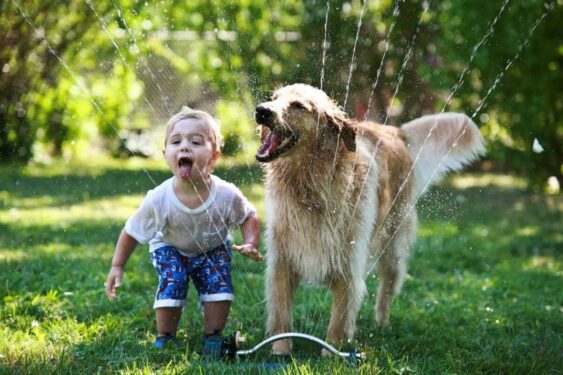


Welcoming a pet into the family brings joy, companionship, and endless opportunities for learning and growth. Beyond the fun and cuddles, having a pet also comes with responsibilities that teach children valuable life lessons about empathy, compassion, and accountability. In this blog post, we'll explore practical strategies for encouraging children to take an active role in caring for family pets, fostering a sense of responsibility, and nurturing a lifelong bond built on love and mutual respect.
Involve Them from the Start:
From the moment a new pet enters the home, involve children in the care process. Take time to introduce the pet to each family member, explain their needs, and demonstrate how to handle them safely and gently. By making children feel like valued participants in the pet's life, they develop a sense of ownership and responsibility from the outset.
Assign Age-Appropriate Tasks:
Assigning age-appropriate tasks ensures that children can contribute to the care of the pet in meaningful ways. Younger children can assist with simple tasks like filling food and water bowls, brushing fur, or playing with the pet. Older children can take on more responsibility, such as feeding, grooming, walking, or cleaning up after the pet.
Establish a Routine:
Creating a consistent care routine helps children understand the importance of regular care and creates structure and predictability for both the pet and the family. Set designated times for feeding, grooming, exercise, and play, and encourage children to take ownership of their assigned tasks within the routine.
Educate Them About Pet Needs:
Teach children about the specific needs and preferences of the pet, including dietary requirements, exercise needs, grooming routines, and behavioral cues. Help them understand the importance of meeting these needs to ensure the pet's health, happiness, and well-being.
Lead by Example:
As parents and caregivers, lead by example by demonstrating responsible pet care practices and modeling compassionate behavior towards animals. Show children how to interact with the pet with kindness, patience, and respect, and involve them in positive reinforcement training and socialization activities.
Encourage Bonding Time:
Encourage children to spend quality time bonding with the pet through play, cuddling, and training sessions. Building a strong emotional connection fosters empathy and compassion in children and strengthens the bond between the pet and the family.
Acknowledge and Reward Efforts:
Acknowledge and praise children for their efforts in caring for the pet, recognizing their contributions and the positive impact they have on the pet's well-being. Consider implementing a reward system or creating opportunities for special privileges or outings as a way to reinforce responsible behavior.
Use Challenges as Learning Opportunities:
Embrace challenges and mistakes as valuable learning opportunities for children to develop problem-solving skills, resilience, and empathy. Encourage open communication and collaboration to address any issues or concerns that arise, and work together as a family to find solutions that benefit both the pet and the children.
Encouraging children to take an active role in caring for family pets is a rewarding journey that fosters responsibility, compassion, and mutual respect. By involving children from the start, assigning age-appropriate tasks, establishing a routine, educating them about pet needs, leading by example, encouraging bonding time, acknowledging efforts, and embracing challenges as learning opportunities, parents and caregivers can empower children to become compassionate and capable caretakers who cherish their furry companions for a lifetime. Together, let's cultivate a nurturing environment where children and pets thrive in harmony, sharing love, laughter, and unforgettable memories.




